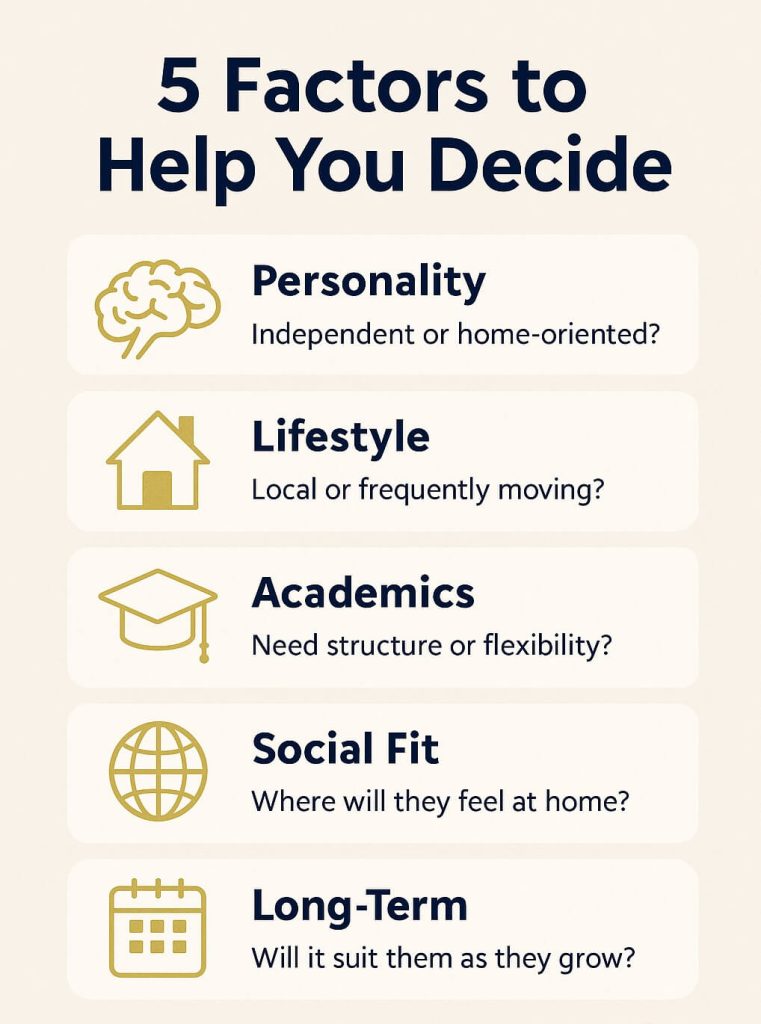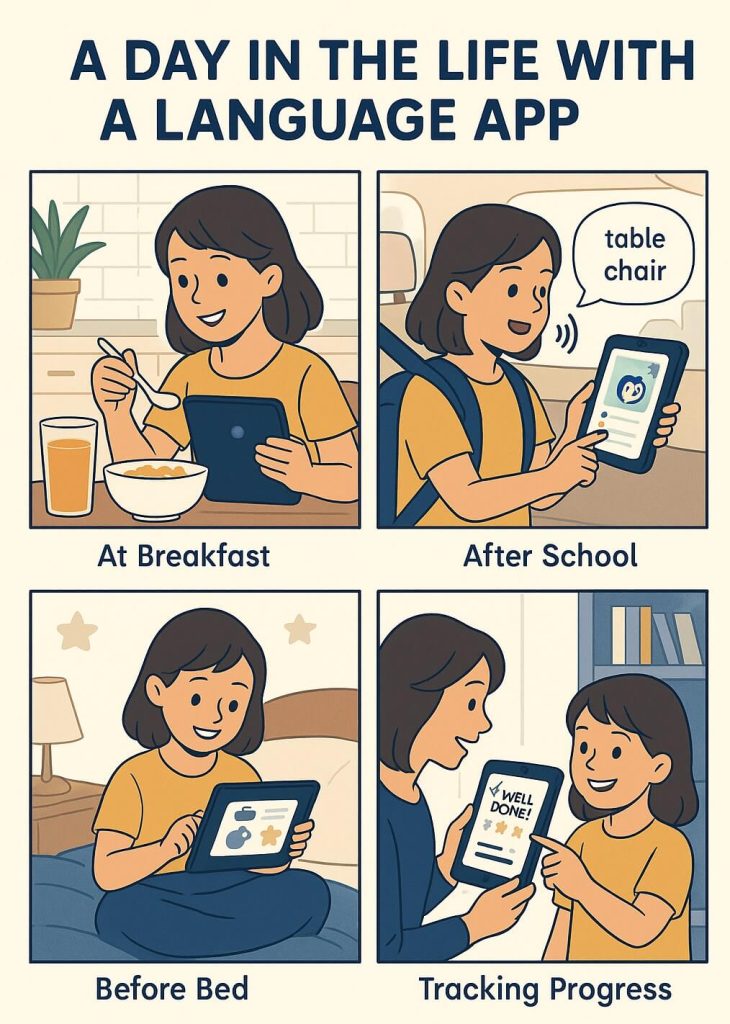For many families navigating international schooling, language development is a top priority. Whether your child is adjusting to English as a second language, maintaining fluency in their mother tongue, or expanding their multilingual skills, finding the right support outside the classroom can make a world of difference. Language learning apps offer a flexible, engaging way to reinforce school-based learning, especially in environments where students often move between cultures and languages.
But with hundreds of apps on the market, how do you know which are worth your time, and your child’s attention? Our guide highlights some of the best language learning apps tailored for children in international school settings. From early learners to teenagers, we explore age-appropriate tools that combine fun with effective language development, helping your child thrive academically and socially in a global learning environment.
Why Language Learning Apps Matter for International School Students
Language Gaps and Multilingual Needs
Children attending international schools often find themselves navigating multiple languages, learning in English while speaking another language at home, or transitioning from one curriculum to another. This can create uneven language development, especially during key academic stages. For many families, language learning apps offer a way to support classroom instruction while reinforcing vocabulary, reading comprehension, or speaking skills in a fun, low-pressure setting.
Benefits of Tech-Based Learning
One of the strengths of educational apps is their flexibility. They allow children to practise at their own pace, repeat difficult concepts, and stay motivated through gamified rewards and visual feedback. Many apps now use voice recognition, adaptive learning, or AI-driven review systems to personalise learning pathways. For parents, they also provide a way to track progress and introduce language learning into daily routines, whether during commutes, holidays, or screen time at home.
Best Language Learning Apps for Young Learners (Ages 3–7)
Lingokids
Designed specifically for young children, Lingokids offers English language learning through play. The app features colourful animations, games, songs, and guided lessons, making it ideal for pre-readers and early learners. Parents can also track progress through a companion dashboard.
Endless Alphabet / Endless Reader
These apps focus on building vocabulary and early literacy. With quirky animations and interactive puzzles, they help children learn word meanings and phonics through repetition and visual engagement. They are especially helpful for children still building English foundations.
Gus on the Go
Gus on the Go introduces children to over 30 languages using short lessons, stories, and games. The format is simple and intuitive, making it a great choice for bilingual households looking to reinforce a home language in a child-friendly format.
These apps are most effective when used alongside real-world interaction, whether that’s parent-child dialogue, reading physical books, or singing together in the target language.
Best Apps for Primary Students (Ages 7–12)
Duolingo and Duolingo ABC
Duolingo is one of the most widely used language apps globally, offering short, gamified lessons in over 30 languages. Its bite-sized structure and streak-based rewards keep learners engaged. For younger users, Duolingo ABC focuses on reading and phonics in English, ideal for children strengthening early literacy.
FunEasyLearn
This app supports vocabulary development across multiple languages with illustrations and context-based learning. Children can choose from different themes such as school, travel, or home, and practise through games, quizzes, and visual prompts.
Mango Languages
Mango Languages offers a more structured learning path, teaching practical conversation and cultural context. Though often used by schools and libraries, it is also suitable for home use, especially for parents seeking a balanced approach between grammar, pronunciation, and listening.
Best Apps for Older Children and Teenagers (12+)
Babbel
Babbel offers structured, real-world language lessons tailored for learners aged 12 and up. It’s especially useful for teenagers seeking to improve grammar and conversational fluency in a second or third language. Lessons focus on practical usage, which makes it a good supplement for school-based language study.
Busuu
With personalised study plans, native speaker interaction, and built-in feedback, Busuu is ideal for older learners who are ready to take more ownership of their language progress. It covers CEFR levels and supports academic language development for international curricula such as IB or IGCSE.
Memrise
Memrise is known for its strong emphasis on listening and speaking. It uses video clips of native speakers and spaced repetition to help students remember vocabulary in context. It’s particularly useful for students preparing for oral exams or those wanting to improve pronunciation and comprehension.
These apps can help older students consolidate school learning and build language confidence, especially when preparing for exams or future university pathways in multilingual environments.
What to Look for in a Language Learning App
Age-Appropriate Design and Content
Children learn best when content is tailored to their developmental stage. Look for apps that use age-appropriate visuals, vocabulary, and interactive features. For younger learners, this might include animations and simple games, while older students may benefit more from structured lessons and contextual practice.

Features That Support Learning and Engagement
Not all apps are created equal. The best ones combine educational depth with user-friendly design. Prioritise apps that include:
- Gamified progress tracking to keep learners motivated
- Voice recognition for pronunciation practice
- Support for multiple languages if your child is bilingual or learning more than one language
- Alignment with CEFR or school curriculum levels
- Offline functionality for flexibility while travelling
Reading user reviews and checking whether the app is used by educators or schools can also help narrow your options.
Supporting Language Learning at Home
Combine App Use with Daily Conversation
While language apps provide structured support, they work best when paired with regular, real-world interaction. Encourage your child to use new vocabulary during mealtimes, in storytelling, or through informal chats in the target language. This helps reinforce what they’re learning and builds confidence.
Create a Language-Rich Environment
Supplement app usage with books, audiobooks, music, or subtitled TV shows in the language your child is learning. Even small habits, such as labelling household items or using a bilingual calendar, can strengthen recall and improve comprehension.
Celebrate Progress Together
Set simple goals for app use, such as completing a lesson each day or reaching a new level. Track progress through the app’s dashboard, and offer praise or small rewards to keep motivation high. Involving the whole family in language learning can also make the experience more enjoyable and collaborative.

Choosing the Right App for Your Child
Every child learns differently, and the best language learning app is one that aligns with your child’s age, learning style, and language goals. Some may thrive on visual games and interactive storytelling, while others benefit from structured lessons and pronunciation tools. The key is to find a platform that keeps your child engaged while reinforcing what they’re learning at school.
Apps alone won’t make your child fluent, but they can play an important role in building confidence, reinforcing classroom instruction, and making language learning part of daily life. For curated, trusted resources to support multilingual learners in international school settings, explore our language learning tools and parent-recommended apps on AISL Mall.










